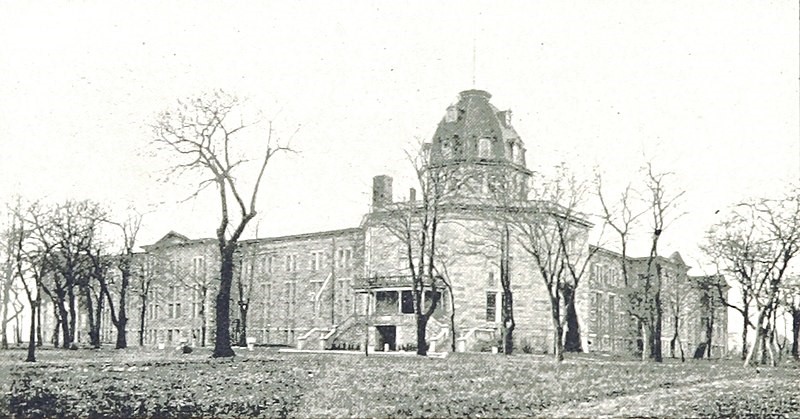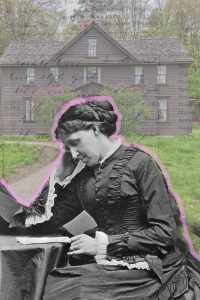Our idea of adventure today might be a road trip to a new destination, or simply getting on a terrifying roller coaster. However, what we envision never seems to include what we watch in movies, like going undercover and spying on an enemy, or traveling around the world in the least amount of days as possible. For journalist Elizabeth Cochrane Seaman, also known by her pen name Nellie Bly, these almost impossible events became realities as her career offered her these kinds of opportunities.1 Even though these assignments seem thrilling, Bly not only completed them of her own free will, but did so to help others by informing the public of various unacceptable behaviors that people were treating others to behind closed doors. There was no doubt in her mind that she would pass up an opportunity to use her gift as an exceptional reporter to liberate those being mistreated who had no voice to be heard. In one of Bly’s early assignments, she willingly allowed herself to be treated as one deemed to have a mental illness. In the 1880’s, she personally experienced the horrors that mentally ill patients went through. in order to have personal insight on the matter.
Bly was still new to journalism and in 1887 editors rarely hired women, so when Joseph Pulitzer’s New York World, a leading newspaper company at the time, offered her the opportunity to investigate an insane asylum, she did not hesitate to accept.2 Bly had so much confidence in herself that she had little doubt that she would be able to pull off the act of being insane. The asylum was located in New York on Blackwell’s Island, where it was known to be easy to get in, but nearly impossible to get out. She had read previous documents about the mistreatment of the mentally unstable and assumed they were all over dramatized; however, she knew little of what she would soon come to experience firsthand.3

Bly started this journey with seventy cents and a single promise from her editor that he would get her released after she spent ten days in the asylum on Blackwell’s Island, even if that meant exposing her identity.4 Bly first began by checking herself into a boarding house for women, and with some acting under her cover name Nellie Brown, she staged an encounter with the police. This soon led four doctors to claim she was insane, and soon after, Bly found herself riding in an ambulance on her way to Blackwell Island.
Once settled into the daily routine that doctors had for the patients at the asylum, Bly began to notice what was occurring within the facility. What happened behind the walls of this mental institution consisted of common mistreatment, such as having few heaters so everyone was freezing, forcing patients to shower in ice cold baths, and feeding them very small portions of food with repulsive tastes.5 The treatment became worse as the attendants were abusive and this misconduct was slowly integrated into part of the day-to-day procedure at the asylum, which Bly had to cooperate with.6 However, she was not alone, as she met other women in the institute that did not have any mental illnesses either, but had been checked in because of miscommunication and other various reasons.
The women Bly encountered each had their own story and explanation for how they ended up in this horrifying mental hospital. One woman specifically had no need to be there, but since she mostly spoke French, she was unable to tell the doctors her story, and because she was crying in fear of never being released, the attendants choked her. Bly recorded many cases such as this one, when women would be hurt and nobody would speak up and change it. The injures towards one of the women resulted in a black eye, and when the doctors asked about it, the nurses claimed she entered the facility with it. Many others shared with Bly the details of the abuse they encountered, including Mrs. Cotter:
Then they tied my hands and feet, and, throwing a sheet over my head, twisted it tightly around my throat, so I could not scream, and thus put me in a bathtub filled with cold water. They held me under until I gave up every hope and became senseless. At other times they took hold of my ears and beat my head on the floor and against the wall. Then they pulled out my hair by the roots, so that it will never grow in again.7

As promised, Bly’s editor got her out of the asylum ten days later, and soon after, Bly was able to share the outrage she discovered on her assignment with the world.8 Bly became that needed voice the patients in Blackwell’s Island Asylum were lacking, leading to a contribution of one million dollars per year towards caring for those with mental illnesses in New York City. This dreadful news had shocked the public and had given Bly the publicity she needed to boost her career. Yet she did not stop there. Bly continued with her passion of reporting and went undercover in places such as women’s prisons, and later traveled to the front lines during War World I.9 During Bly’s profession as a journalist she changed the views that individuals had towards the poor and helpless and how they should be treated in the hopes of having a future in which all people would be given the respect and dignity they deserve.
- Richard Ernsberger Jr., “Nellie Bly: Fearless Reporter,” American History 50, no. 2 (June 2015): 77. ↵
- MasterFILE Premier, August 2017, s.v. “Nellie Bly,” by Keira Stevenson. ↵
- Nellie Bly, Ten Days in a Mad-House (New York: Ian L. Munro, 1887), 1. ↵
- Nellie Bly, Ten Days in a Mad-House (New York: Ian L. Munro, 1887), 3. ↵
- Nellie Bly, Ten Days in a Mad-House (New York: Ian L. Munro, 1887), 13. ↵
- MasterFILE Premier, August 2017, s.v. “Nellie Bly,” by Keira Stevenson. ↵
- Nellie Bly, Ten Days in a Mad-House (New York: Ian L. Munro, 1887), 14. ↵
- Jean Marie Lutes, “Into the Madhouse with Nellie Bly: Girl Stunt Reporting in Late Nineteenth-Century America,” American Quarterly 54, no. 2 (2002): 218. ↵
- Richard Ernsberger Jr., “Nellie Bly: Fearless Reporter,” American History 50, no. 2 (June 2015): 77. ↵



77 comments
Matthew Rios
Thanks Megan! I think you did a good job at putting this article together. Nellie certainly had a story worth telling. I was generally aware of the past stigma with Asylums and the maltreatment of those declared clinically insane, but I wasn’t aware of this woman’s venture into the study of this regard. It’s truly a whole different level of dedication to agree to be subjected to such treatment for the sake of understanding.
Andrea Chavez
It is very interesting to find patterns in asylum related story’s, which is that there is always some kind of mistreatment towards the people who are intervened. Also how there are some people who are being tortured for nothing, because they are really not crazy. Sometimes the stories behind this type of people are really interesting. Im just glad that the editor did get her out, cause ive read stories of people leaving them behind till they die and stuff like that.
Lisa Varela
What an incredible story! The fact that Elizabeth Cochrane Seaman put herself at risk to discover the truth is admirable. This article was well written, I could imagine the event happening like a movie before my eyes. The hardships that people experienced in mental hospitals is terrifying. The idea of being placed accidently or for lack of communication into a place like that must have been very traumatic. For instance, that French lady, for not being able to speak the language she was placed in such a horrible place.
Eduardo Foster
What an interesting article! It is incredible what people can do to help other people. In this case, Nellie Bly, went to an asylum on purpose just to see how people were treated there inside. She is actually a very courage person that really have a desire to change the world. Great article and keep it up with the good work!
Manuel Aguilera
I am not entirely sure if it is a joke or perhaps some scary story to tell, but I have heard of an instance in which a man tried to prank the community by pretending to be crazy and resulted in actually being sent to an asylum, but when people tried to convince others he was not crazy, he in fact became crazy because of the stress he was forced into in the institute. I am curious about Bly’s other instances of going undercover and showing the wrongs of other communities.
Luke Willis
This was a very interesting article. I have definitely seen movies and television shows where people have gone undercover in the insane Asylums and even seeing those were thrilling and terrifying at the same time. It is incredible that this women actually did it and real life and the things that she had to go through are incredible. Great Article!
Ryann Cervantes
Wow this girl is one of the bravest people I’ve read about. You couldn’t pay me to go to an insane asylum with the reputation for not letting anyone out. This was a great story and what’s sad is that it is not unbelievable. It’s almost the norm when we hear about asylums abusing patients and that is honestly really sad. We need more people like her to uncover and be the voice for victims.
Alexis Renteria
I’m glad that this article covered the problems there were and to this day still are in mental institutions or even nursing homes. Something that shocked me was how Nellie was so determined to cover the abuse women faced in the mental asylum that she put herself in their shoes and experienced what it was like to be there herself. Its amazing how much work she put into her career and she deserved nothing else than to get the recognition she deserved.
Mariet Loredo
The courage some people have, like Nellie Bly, is outstanding. She purposely became a patient at Blackwell’s Island insane asylum to gather information of how the patients were actually treated. She discovered that the patients were treated very badly and she wanted to bring them justice. She used her talent to speak for these people who had no voice and this gave them the peace they deserved.
Lauryn Hyde
Fascinating article about a story I had never heard of before. I have seen a fictional TV show based on this, however I had no idea this had ever happened. Without brave young woman taking risks like Nellie Bly there are lot of social changes that may have never come about. It is also great to her that even after leaving the insane asylum, she continued to go undercover in various places to continue to use her voice to bring change to the world.